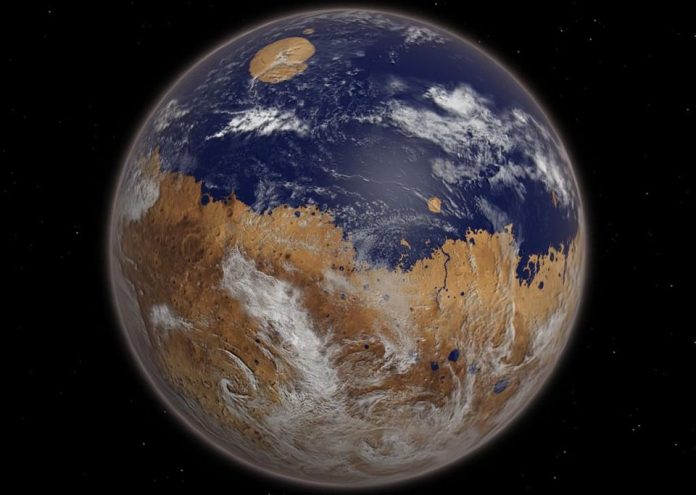Venus may have been habitable 700m years ago, could this be promising for Venus-like planets in other solar systems?
A study presented today at the EPSC-DPS Joint Meeting 2019 by Michael Way of The Goddard Institute for Space Science gives a new view of Venus’s climatic history and may have implications for the habitability of exoplanets in similar orbits.
Forty years ago, NASA’s Pioneer Venus mission found tantalizing hints that Earth’s ‘twisted sister’ planet may once have had a shallow ocean’s worth of water. To see if Venus might ever have had a stable climate capable of supporting liquid water, Dr Way and his colleague, Anthony Del Genio, have created a series of five simulations assuming different levels of water coverage.
In all five scenarios, they found that Venus was able to maintain stable temperatures between a maximum of about 50 degrees Celsius and a minimum of about 20 degrees Celsius for around three billion years. A temperate climate might even have been maintained on Venus today had there not been a series of events that caused a release, or ‘outgassing,’ of carbon dioxide stored in the rocks of the planet approximately 700-750 million years ago.
“Our hypothesis is that Venus may have had a stable climate for billions of years. It is possible that the near-global resurfacing event is responsible for its transformation from an Earth-like climate to the hellish hot-house we see today,” said Way.
Three of the five scenarios studied by Way and Del Genio assumed the topography of Venus as we see it today and considered a deep ocean averaging 310 meters, a shallow layer of water averaging 10 meters and a small amount of water locked in the soil. For comparison, they also included a scenario with Earth’s topography and a 310-meter ocean and, finally, a world completely covered by an ocean of 158 meters depth.
To simulate the environmental conditions at 4.2 billion years ago, 715 million years ago and today, the researchers adapted a 3D general circulation model to account for the increase in solar radiation as our Sun has warmed up over its lifetime, as well as for changing atmospheric compositions.
Although many researchers believe that Venus is beyond the inner boundary of our Solar System’s habitable zone and is too close to the Sun to support liquid water, the new study suggests that this might not be the case.
“Venus currently has almost twice the solar radiation that we have at Earth. However, in all the scenarios we have modeled, we have found that Venus could still support surface temperatures amenable for liquid water,” said Way.








